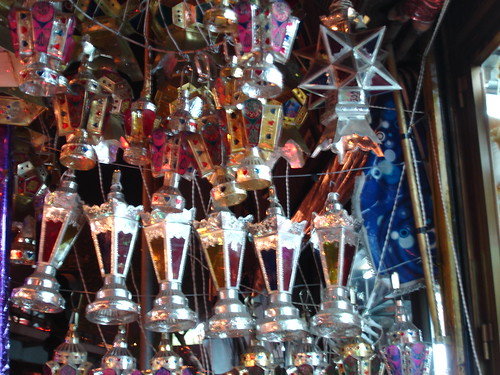It may be breakfast Jim, but it's not as we know it! Forget cereal, toast and pancakes. This is a breakfast of soup and dates rice or potatoes of vegetables and meat, especially in Egypt, meat reigns supreme. No gathering of friends or family would be complete without copious amounts of meat. Red meat cooked in various ways, chicken, turkey, you name it, chances are it'll be on the table!
 |
| A traditional liquorice juice seller. |
And now, dessert! Although the sweets eaten in Ramadan are available all year round, they have a special place in any Ramadan meal. In Egypt most people stick to Oriental sweets at this time of the year, the most popular being konafa a dish made with shredded fillo pastry, drenched in syrup and stuffed with nuts or cream or raisins. Basbousa is a semolina dessert again cooked with syrup. Baklava, golash (pastry not meat) and various other sweet things also make an appearance.
Sohoor is the meal eaten about an hour before dawn as a chance to fill up the tank before another day of fasting (all that food from earlier doesn't count!). This is a much lighter meal usually of eggs, fool( broad beans) and cheese.
It should be noted at the end of this piece that although food plays a major part of this holy month, it is about much much more. This is the first time I've experienced Ramadan in the heat of summer (Ramadan gets earlier by about 11 days each year, following the lunar cycle) and never in my life have I been more grateful for a glass of cold water and count my blessings that I have access to clean, safe drinking water. And that is the main reason behind this month, to remind us of how lucky we are to be able to eat and drink and to give a taste (if you'll excuse the pun) of how people with little or no food and water feel everyday and to remind us to help as many of those people as we can. A common sight in streets during this month is Moa'ed Rahman or Mercy Tables where people pay or provide food to feed the needy, these are open to anyone all throughout the month.
All images were found using Google Images. No copyright infringement intended.












